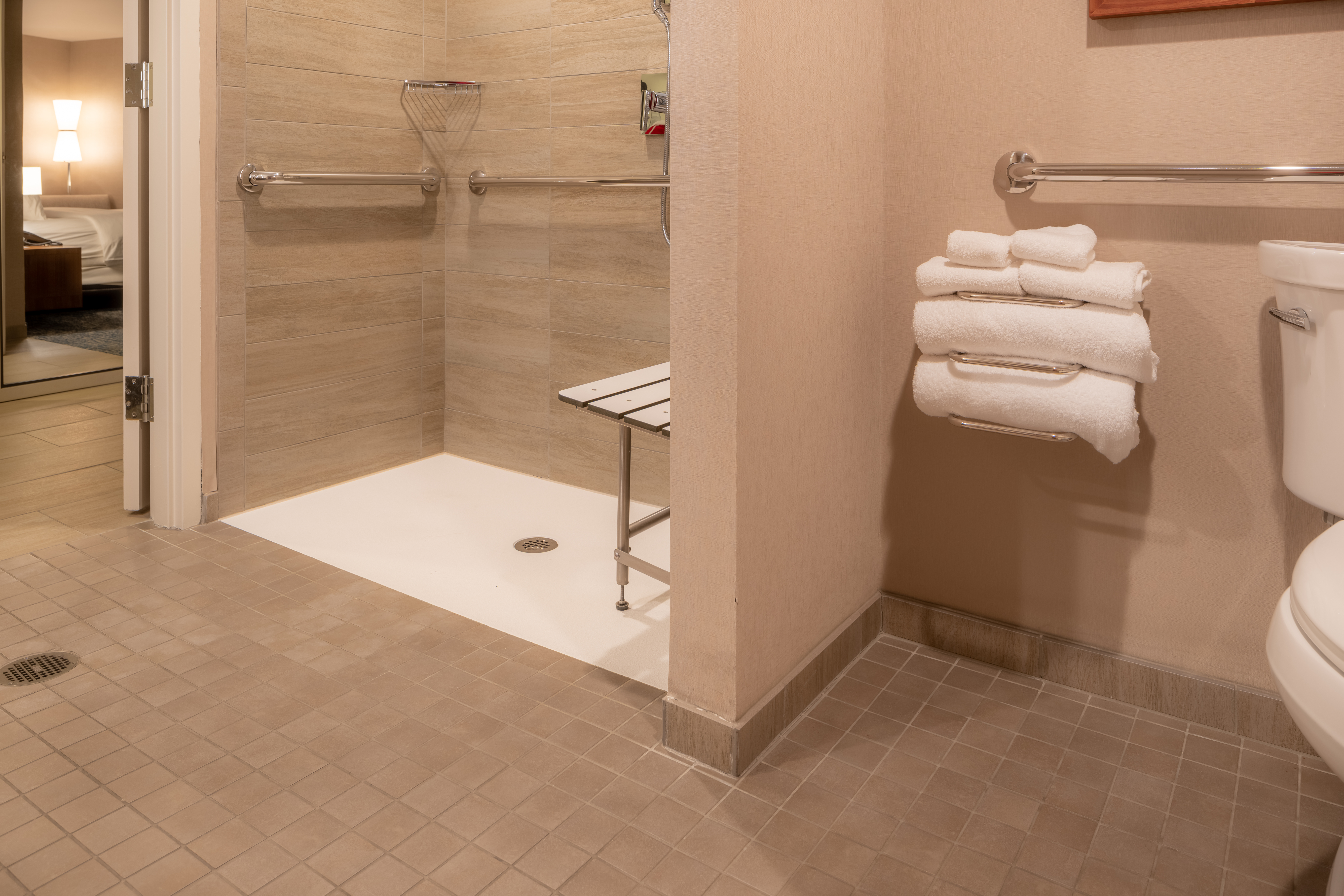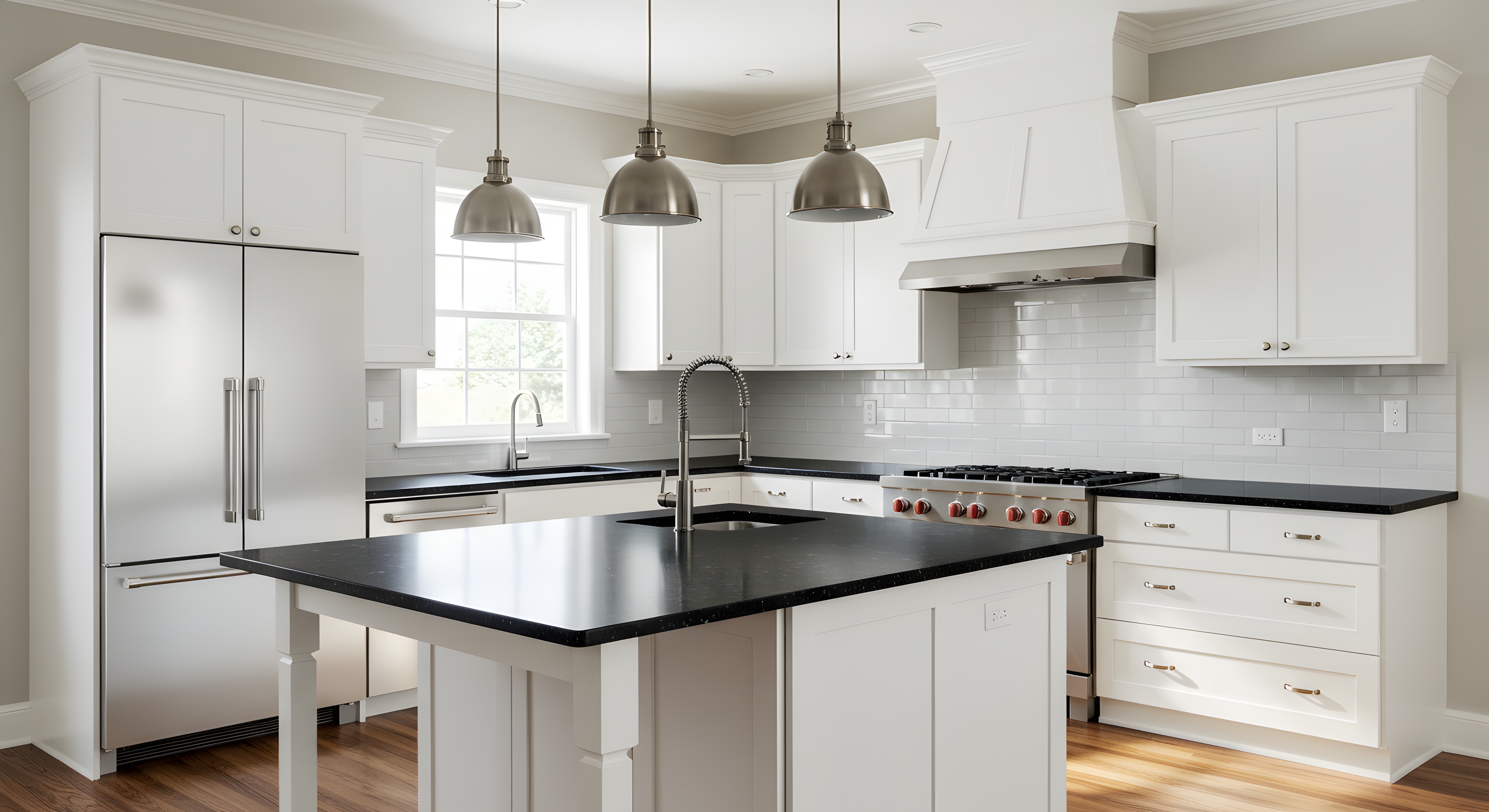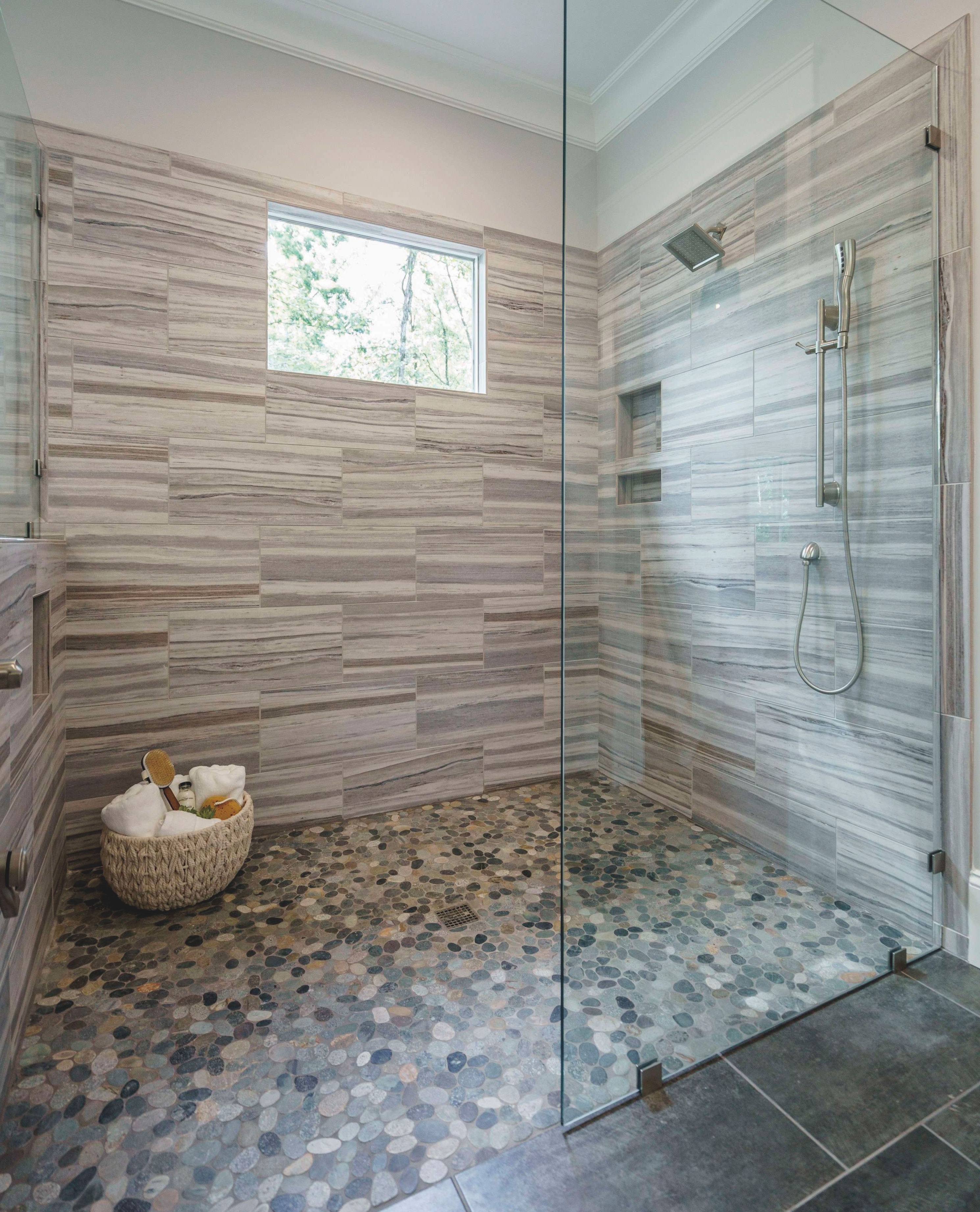
Photo courtesy of Propane Education and Research Council
INTRODUCTION TO INCLUSIVE AND UNIVERSAL DESIGN
The Americans with Disabilities Act was signed into law on July 26, 1990, by President George H.W. Bush.1 Accessibility standards for buildings only apply to public and private commercial facilities that provide goods or services to the public (aka public accommodations), not private homes. But we live in an era of changing cultural norms and over the past three decades society has had the chance to rethink discrimination, with growing social awareness of gender identity, differently abled individuals, and sensory sensitivity.
This has led to a movement to make all spaces barrier-free, accessible, and inclusively designed so that they are safe, comfortable, and easy for all occupants to use. Providing these options is an excellent way for homeowners and facilities to get ahead of the changing times. Designing accessible and inclusive spaces not only empowers users with special needs, but many other people as well such as pregnant women, children, those of shorter stature, and the elderly. Accessible and inclusive design also successfully bridges the gap between practicality and physical, mental, and emotional well-being.
UNIVERSAL DESIGN
An early example of inclusive design is universal design, which is a philosophy that emerged in the 1960’s to champion the design of inclusive products and environments for all. Founded in 1993 by architect, product designer, and educator Ronald Mace, The Center for Universal Design at North Carolina State University’s College of Design created a framework for the theory and practice of universal design.
The Center is a national research, information, and technical assistance center that evaluates, develops, and promotes accessible and universal design in housing, buildings, outdoor and urban environments, and related products. The Center’s work manifests the belief that all new environments and products, to the greatest extent possible, should be usable by everyone regardless of their age, ability, or circumstance. Planning for spaces with all users in mind, regardless of ability, gender, or age, makes for a safer and more comfortable built environment that is easy for all occupants to use.
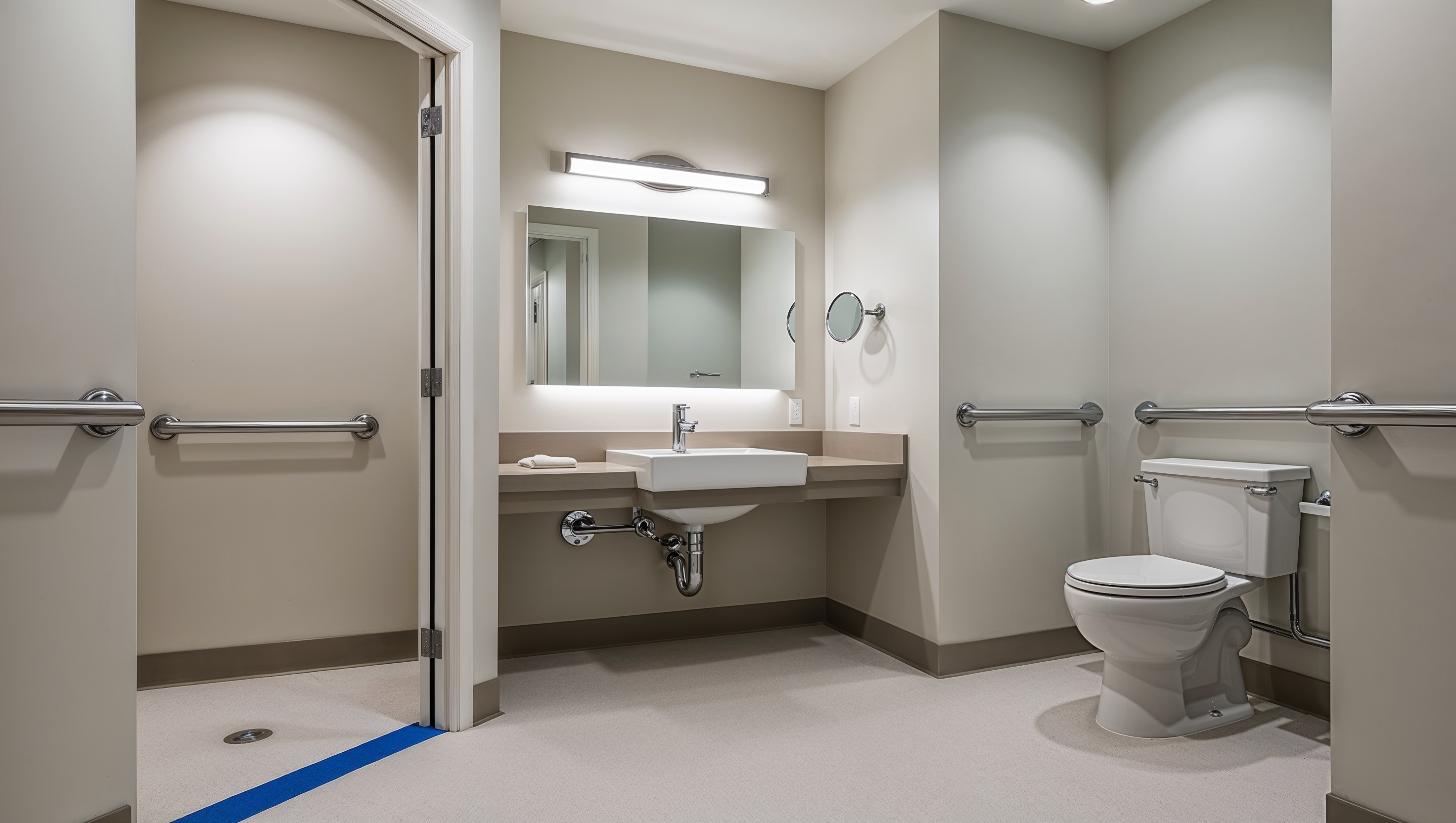
Photo courtesy of Adobe.
While they look like traditional cabinets on the outside, these open fully and have no exposed piping underneath so that wheelchair users can easily access the sink; this is a perfect example of the Size and Space for Approach and Use principle.
7 Principles of Universal Design2
The Center for Universal Design outlines 7 Principles of Universal Design that designers should try to achieve. Universal design principles call for structures and spaces to accommodate a variety of abilities; be easy and intuitive to use; communicate necessary information, regardless of sensory abilities; minimize opportunity for error; and be able to accommodate different body sizes, postures and mobility.
The 7 Principles are as follows:
- Equitable Use. The design is useful and marketable to people with diverse abilities.
- Flexibility in Use. The design accommodates a wide range of individual preferences and abilities.
- Simple and Intuitive Use. Use of the design is easy to understand, regardless of the user’s experience, knowledge, language skills, or current concentration level.
- Perceptible Information. The design communicates necessary information effectively to the user, regardless of ambient conditions or the user’s sensory abilities.
- Tolerance for Error. The design minimizes hazards and the adverse consequences of accidental or unintended actions.
- Low Physical Effort. The design can be used efficiently and comfortably and with a minimum of fatigue.
- Size and Space for Approach and Use. Appropriate size and space are provided for approach, reach, manipulation, and use regardless of user’s body size, posture, or mobility.
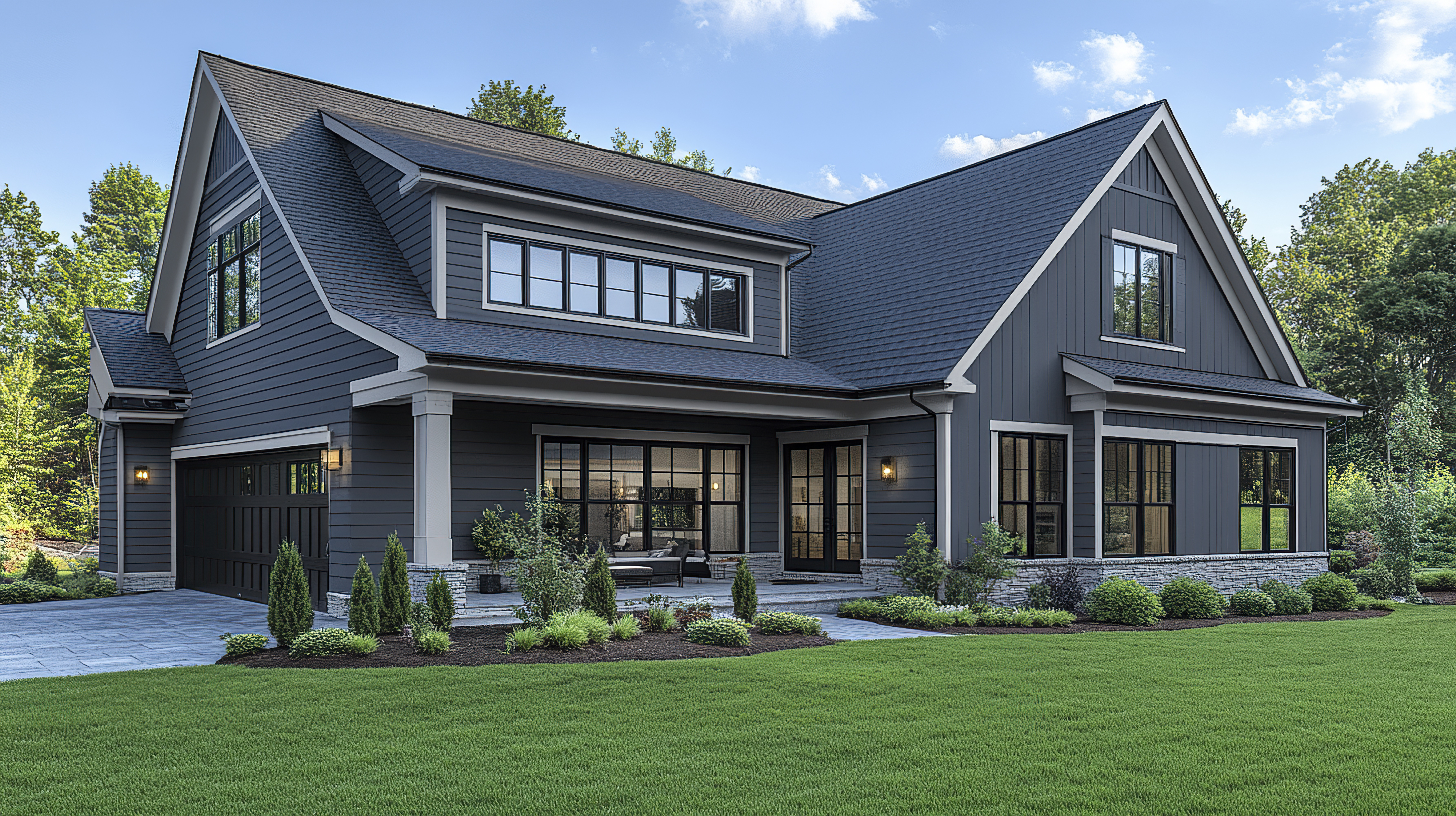
Photo courtesy of Adobe
The COVID-19 pandemic brought universal design to the forefront, as people noticed how their homes could be improved to make their lives easier and safer; it also shifted the makeup of households and laid bare the vulnerabilities of an aging population. Photo courtesy of LifeStage Home Designs.
8 Goals of Universal Design3
The IDEA Center at the University of Buffalo’s School of Architecture and Planning found the need to expand the conceptual framework of universal design beyond usability to include social participation and health. They expanded the idea by establishing the 8 Goals of Universal Design, which are each “supported by an interdisciplinary knowledge base (e.g., anthropometrics, biomechanics, perception, cognition, safety, health promotion, and social interaction)” so more realistic applications can be developed for all design disciplines.
- Body Fit. Accommodating a wide a range of body sizes and abilities.
- Comfort. Keeping demands within desirable limits of body function.
- Awareness. Ensuring that critical information for use is easily perceived.
- Understanding. Making methods of operation and use intuitive, clear, and unambiguous.
- Wellness. Contributing to health promotion, avoidance of disease, and prevention of injury.
- Social Integration. Treating all groups with dignity and respect.
- Personalization. Incorporating opportunities for choice and the expression of individual preferences.
- Cultural Appropriateness. Respecting and reinforcing cultural values and the social, economic, and environmental context of any design project.
EXPANSION OF INCLUSIVE AND UNIVERSAL DESIGN
The COVID-19 pandemic is another drastic societal shift that brought inclusive and universal design to the forefront again. People were home more and noticing the plethora of little things that could be improved to make their lives easier and safer. The makeup of households also shifted, with different generations moving in together, a continuation of a growing trend. It also laid bare the vulnerabilities of an aging population and other at-risk groups.
It’s become clear that many vulnerable populations were hardest hit by the pandemic, and there is “vast room for improvement when it comes to not only designing and operating equitable spaces, but also for ensuring these efforts are reaching those who need it most.”4
The WELL Building Standard, a performance-based system that rates the built environment’s impact on occupant health and wellbeing, believes that universal design can be used as an innovative, collaborative tool to create equitable spaces in the buildings and communities of tomorrow. WELL says, “With this challenge comes the opportunity to reframe expectations for how design can better support equitable and inclusive environments, and universal design can serve as a critical tool to further those efforts as we rebuild in a post pandemic world.”
In fact, WELL’s Feature C13: Accessibility and Universal Design outlines the ways a project can incorporate strategies that promote flexible, usable, and intuitive spaces. WELL standards posit that designing spaces in such a way promotes safety and results in healthier and more equitable built environments.5 As well, equity initiatives have emerged in LEED’s Inclusive Design Pilot Credit and Social Equity Pilot Credit, which recognize that “a building cannot be truly sustainable if it’s not also accessible.”6
RISE OF MULTIGENERATIONAL HOMES
The rise of multigenerational homes is another societal shift in the United States that will have a lasting impact on home design. Multigenerational households are defined as including two or more adult generations (with adults mainly ages 25 or older) or a “skipped generation,” which consists of grandparents and their grandchildren younger than 25.
Most consist of at least two adult generations, such as young adults living with their parents, parents residing in their adult children’s homes, or a grandparent, adult child, and adult grandchild under one roof.7 According to Pew Research, “After declining in earlier decades, multigenerational living has grown steadily in the U.S. since the 1970s. The share of the U.S. population in multigenerational homes has more than doubled, from 7% in 1971 to 18% in 2021.”8
The rise in multigenerational households is linked to the changing makeup of the U.S. population, as foreign born, Asian, Black, and Hispanic Americans are more likely to live with multiple generations in one house and they account for the most recent overall population growth. However, Pew Research notes that “multigenerational living also is rising among non-Hispanic White Americans, who accounted for a higher share of the multigenerational household population growth from 2000 to 2021 (28%) than of total population growth (9%).”
The Great Recession led the National Association of Realtors to begin tracking the share of multigenerational home buyers, as many families moved in together out of financial necessity at that time. They still track these numbers and according to their 2020 Profile of Home Buyers and Sellers report, “Buyers purchasing multigenerational homes during the pandemic rose to a series high of 15%,” which has been tracked since 2012.”
The top reason to purchase a multigenerational home is for aging parents to move into the home, with the second most common reason being cost savings, as family members can pool incomes to purchase a larger home. The third most common reason is adult children boomeranging back home or never leaving. In addition, young adults are staying in school longer and marrying later than previous generations, so they may be more inclined to live with parents and younger siblings for longer.9
AN AGING POPULATION
It’s human nature to want to maintain independence and an active lifestyle for as long as possible, and an important component of this is for aging or disabled people to remain in their own home. The cost of care in an assisted living facility or similar housing situation can be high, so many wish to build a new “forever home” or renovate to accommodate challenges that will come with aging. There are some important considerations that homeowners must weigh before doing so.
Financially, renovating or building a new home keeps the home as an asset, which can be used in retirement and estate planning. In addition, clients can design their home around their lifestyle, whether they entertain frequently or like to cook, garden, or enjoy other hobbies that are easier to pursue in their own home.
One benefit of retirement communities is that they reduce the need to drive, which becomes a challenging, and sometimes dangerous, activity as people age. Whether an assisted living or long-term care facility, transportation, activities, and meals are often provided on-site.10 The takeaway is that if more aging people are going to stay in their homes, it’s supremely important to design residences that are safe, accessible, and beautiful for all.
RECENT LEGISLATION
According to the World Health Organization, more than one billion people worldwide live with a disability that could inhibit their ability to access a building or infrastructure.11 And, according to a 2020 analysis by online realtor Apartment List, “Looking at mobility issues in the U.S. alone, there are about twice as many people with mobility disabilities as available wheelchair-accessible housing.”12
Disabled people also tend to spend a greater share of their income on housing costs because of the lack of supply. For example, there are 15.2 million U.S. households with members that have moderate mobility difficulties but only 6.6 million accessible homes, and only 1.3 million of these homes are actually occupied by someone with a disability.13
Inclusive design ideas aren’t routinely incorporated into U.S. buildings., as code only mandates that they comply with the minimum requirements of the Americans with Disabilities Act. “Now, architects and disability advocates are using the latest discussions around President Joe Biden’s $550 billion infrastructure bill to promote and push for design that makes space accessible to everyone — a method known as universal design. And, they say, adding these features is cost effective,” notes Bloomberg News.
Projects are popping up nationwide that can be a model for architects, planners, and cities to incorporate inclusive and universal design into the built environment. “Buildings are infrastructure, and if we want to ‘build back better,’ we need to build back with everyone in mind, and universal design should be a part of that,” said Marsha Maytum, an architect at Leddy Maytum Stacy Architects. “We’re making this incredible investment over the next many years, and we have the opportunity to do it right, and to benefit everyone.”14
DESIGNERS AS CHANGE AGENTS
No matter what strategy is used, accessible, inclusive, and universal design should be built in from the beginning, providing proactive accommodation, rather than waiting for issues to arise. Forward-thinking homeowners, businesses, and organizations that value inclusion will be the change agents, rather than policymakers, and designers can help in this effort by facilitating discussions with clients and building occupants. This will help ensure the evolution of design moves toward a safer and more comfortable environment for all.
HOW TO ACHIEVE UNIVERSAL DESIGN
There are numerous tactics designers can use to achieve universal design throughout a home, making it safer and easier for all occupants to navigate. Let’s discuss important guidelines for clearances, thresholds, and barriers in entryways, hallways, bathrooms, kitchens, master suites, and other primary areas of a home.
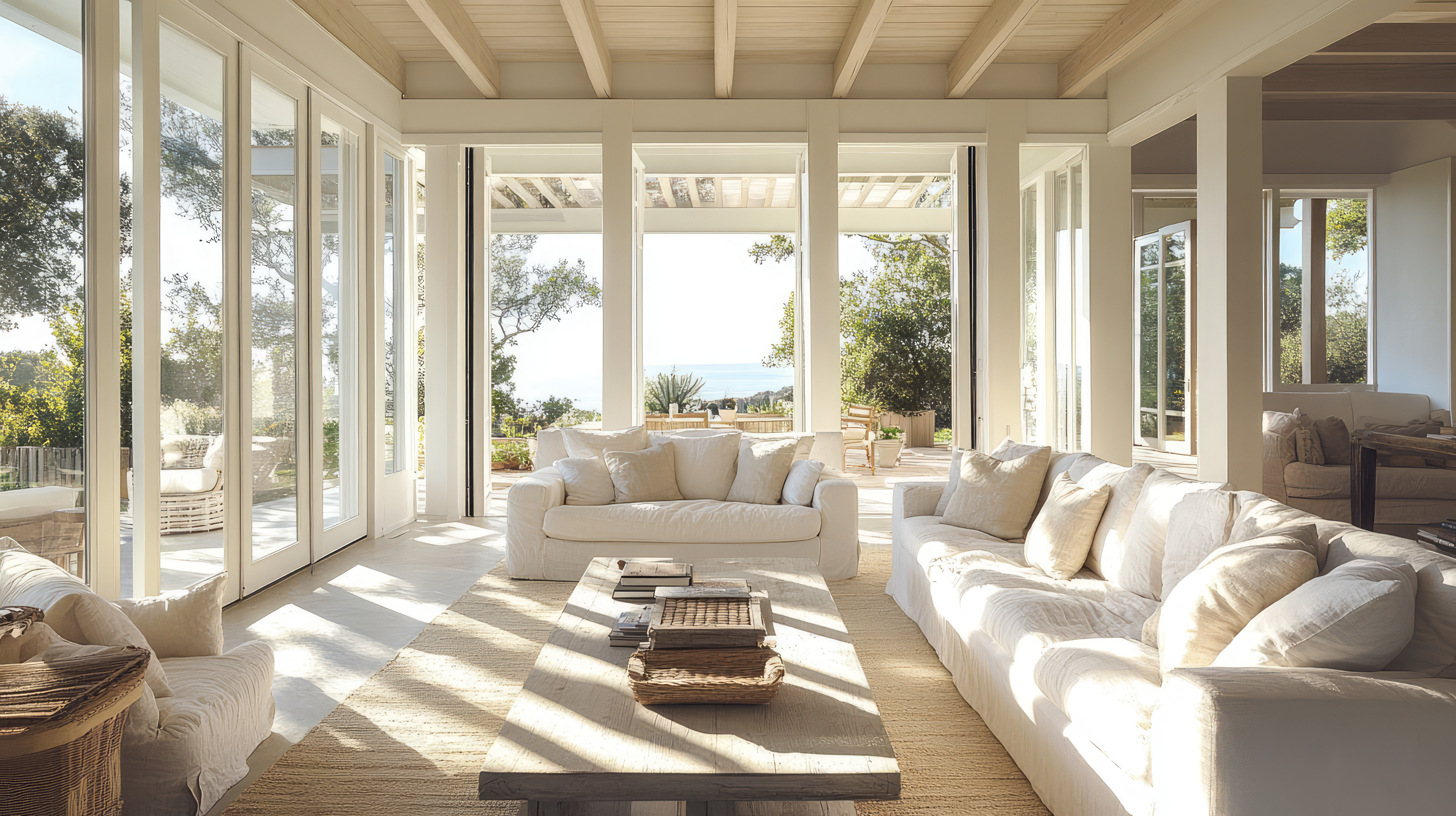
Photo courtesy of Adobe
Open-concept floor plans benefit universal design because they improve traffic flow and access, increase sociability, and the rooms can share light as the daylight from exterior walls reaches interior spaces that would have otherwise been closed off.
Clearances and Open Plans
The demand for open-concept floor plans exploded in the 1990’s, which is the ideal layout for barrier-free homes. Before this, there were more defined areas such as formal living and dining rooms separated by walls and hallways, while kitchens were viewed as strictly utilitarian and placed at the back of the house. Today, the kitchen, dining room, and living area are often one large space with minimal division.
This is an unintended benefit for universal design, as open plans improve traffic flow and access, as well as sociability and the ability to host gatherings. In addition, rooms can share light as the daylight from exterior walls reach interior spaces that would have otherwise been closed off.15
Homes that feature an open concept generally have higher values and are easier to sell when the time comes. In addition, they are more flexible, as spaces can serve multiple functions and easily shift from a family room to an entertainment space to a game room, depending on the homeowner’s needs. It is also easier to move furniture around and change the layout of a room as the family size and needs change over time.16
This being said, designers are seeing a small uptick in people asking for a more traditional approach to plans, with more divided spaces and the kitchen separate from the formal living room and den. Wider hallways and doorways can still be applied, it just takes a bit more planning to provide the necessary flexibility and adaptability throughout the home. All hallways throughout a home should be 4’ wide with 3’ doorways being standard for universal design.
Barrier-Free Entries
Designers are breaking down some of the stereotypes of universal design homes, aging in place, and accessibility. For example, many homeowners think an accessible residence will look like a slab-on-grade house without the prominent foundation height that provides a stately look. But in fact, many subdivisions have foundation height requirements that necessitate a raised front entry and can still be universally designed. Raised foundations with sealed and conditioned crawlspaces are an important and useful design consideration as they allow utilities to be run through the raised foundation, with plumbing drains, mechanical equipment, and supply lines located in the crawlspace, the same as in traditional construction.
But it’s still possible to incorporate features that make navigating through and around a home from the front to the side to the rear easier. Much of this is accomplished through sitework such as grade manipulation. Every site will differ, but one approach to creating a barrier-free entry with no steps into the house is to backfill the garage to create a subtle change in grade from the driveway.
The garage slab is lifted a bit higher and backfilled to achieve a zero transition as you enter the home. The garage and door into the house are at the same level as the interior finished floor, so once you enter the garage there are no steps to traverse from the daily entry into the house. It’s important to provide a maximum tolerance of 1/2” from the top of the garage slab to the interior finished floor with a low-profile seal which will allow anyone, from someone in a wheelchair or walker to a parent coming home with children and an armful of groceries, to safely navigate the entry.
You can also create other stepless areas, such as a gentle ramp onto a patio with materials that seamlessly transition (e.g., a hardscape ramp that meets the decking at the same level) so there are zero steps to navigate at the rear of the home as well. This can be accomplished through gentle grading around the entire exterior of the home, providing full 360-degree access for the homeowner and guests.
A home doesn’t have to be entirely stepless; the formal front entrance may still have a traditional raised portico with steps but providing a barrier-free entry at the garage and rear gives an alternate and accessible means to enter the home and enjoy outdoor living spaces.
Adding additional lighting at the exterior provides safety and security for homeowners and guests. Examples include pathway lighting, lighting on stair risers, lanterns on piers, and lighting incorporated into hardscaping such as stone walls.
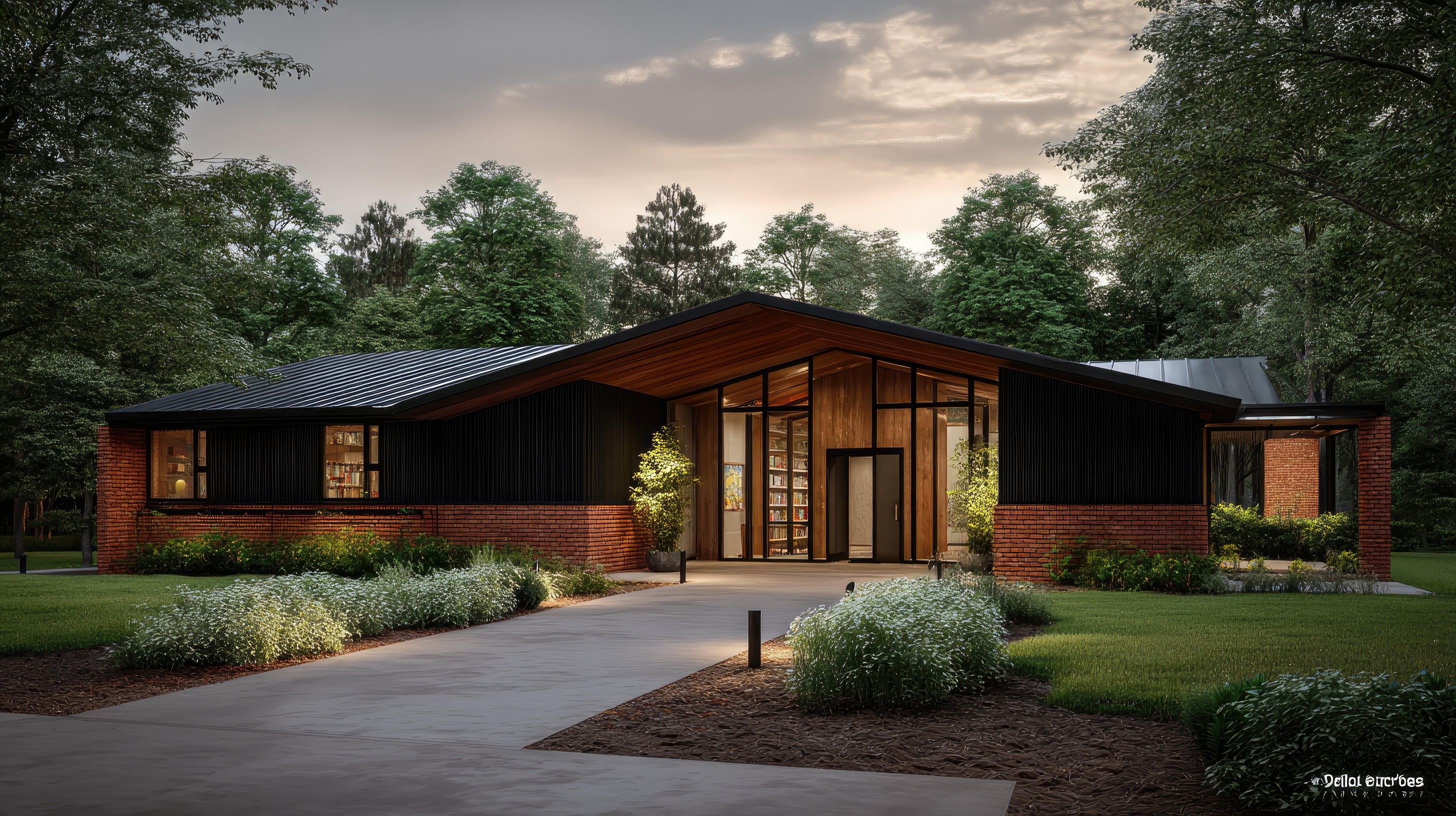
Photo courtesy of Adobe
One approach to creating a barrier-free entry with no steps into the house is to backfill the garage to create a subtle change in grade from the driveway; the garage slab is lifted a bit higher and backfilled to achieve a zero transition as you enter the home.
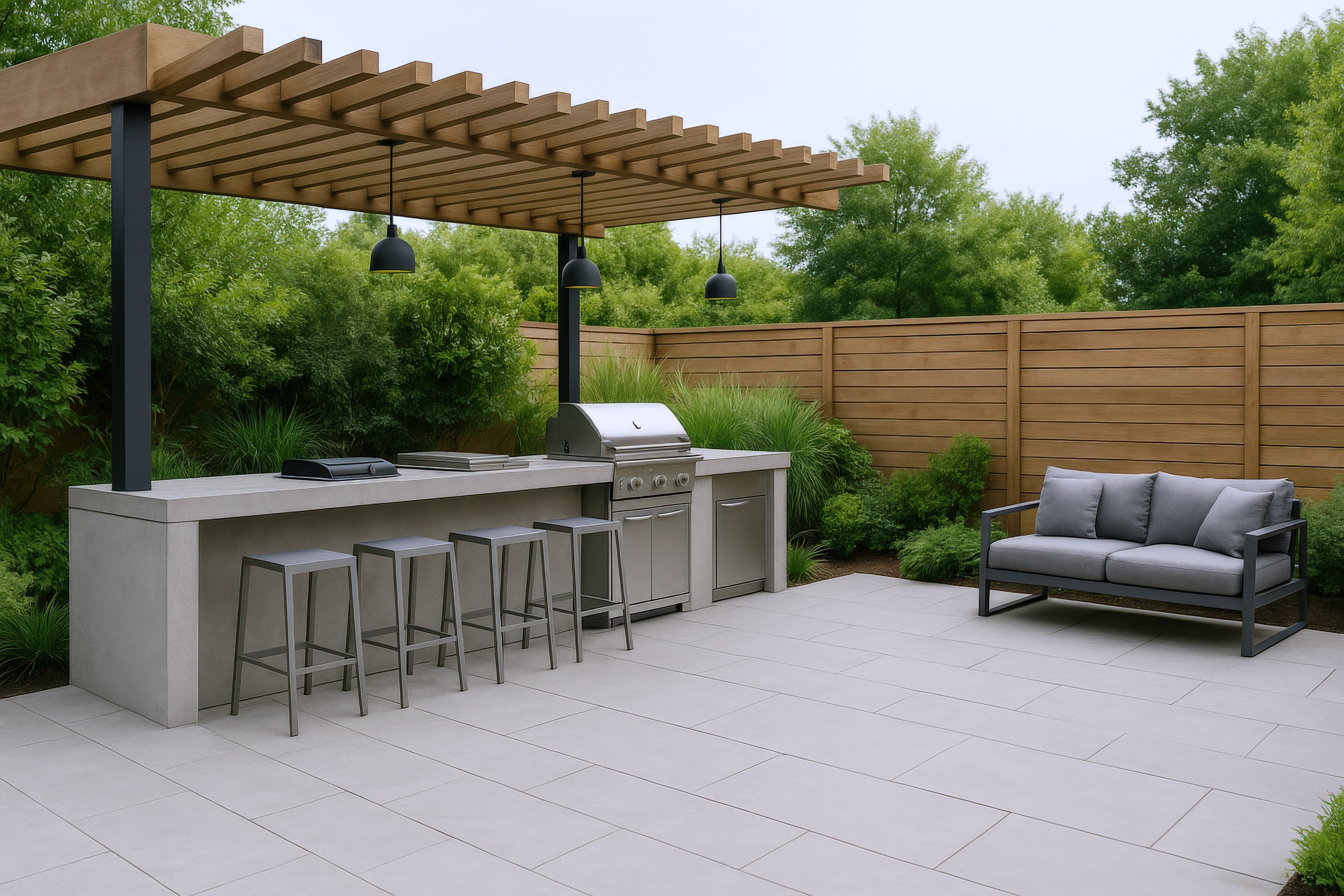
Photo courtesy of Adobe
Create other stepless areas, such as a gentle ramp onto a patio with materials that seamlessly transition (e.g., a hardscape ramp that meets the decking at the same level) so there are zero steps to navigate at the rear of the home as well.
Bathrooms
It may be surprising to learn that bathrooms are typically the most dangerous room in the home, but when you consider the proliferation of water, slippery surfaces, and changes in surface height that people must navigate, it makes a great deal of sense. The Centers for Disease Control and Prevention (CDC) analyzed data from a nationally representative sample of emergency departments to determine the number and circumstances behind nonfatal injuries in bathrooms among people older than 15 years in the U.S.
They documented 3,339 cases and found that 81.1% of injuries were caused by falls and the injury rates increased with age. 37.3% of the injuries were caused by bathing, showering, or getting out of the tub or shower; slipping caused 17.3% of injuries; and 14.1% occurred when standing up from or sitting down on the toilet. 5.5% of injuries were caused by loss of consciousness.17
The CDC notes,"These findings suggest that all adults, especially older adults, their caregivers, and their family members, should be educated about activities in the bathroom that more frequently result in injury, notably getting out of tubs and showers and getting on and off toilets. Injuries might be reduced through environmental modifications, such as putting non-slip strips in the tub or shower, adding grab bars inside and outside the tub or shower to reduce falls, and installing grab bars next to the toilet for added support if needed.”
Another key design element with aesthetic appeal and practical advantages is a zero- threshold (curbless) shower. Not only are they safer and more accessible, but they are easier to clean, and the seamless look can make bathrooms look larger. To frame for a curbless shower, there is a flush transition from the tile into the shower stall so there are no tripping hazards. The trend is currently eliminating the bathtub and installing a larger shower, particularly in the owner’s suite. According to Josh Mauney of Paragon Builders, “50% of clients are eliminating the tub for a larger shower stall because they are easier to clean and maintain. The majority of the time the client wants a hand-held slide-rail and wand shower head for both bathing and cleaning.”
To meet universal design principles, showers should have a 36” opening and turning radius. Safety is paramount, so grab bar blocking should be incorporated in all showers and water closets, even if the grab bar itself is not installed right away. In addition, the valves and diverter should always be in reach of the entry point of the shower, a safety precaution that eliminates having to get into the shower to check the water temperature.
The occupant can turn on the water safely and monitor the water temperature before entering the stall. In addition, tankless water heaters with recirculating pumps that provide instant hot water make it easier to enter the shower stall and newer learned behavior tankless water heater systems are even safer, as they learn human behavior within the first 7 to 14 days of installation to create an optimal hot water schedule that adapts to each user.
These are prime examples of how a bit of careful planning and incorporating features that aren’t even noticeable can make a homeowner’s life more enjoyable and work for them over the long-term. There is no limit to the creativity that can be applied in a bathroom, with sleek tile and modern hardware fitting into universal design as seamlessly as a more traditional aesthetic.
Kitchens
Larger kitchens with an open floor plan have proven to be a generational shift that is here to stay. The size of the average kitchen in a single-family residence started growing in post-war America, and large kitchens that serve numerous functions as utilitarian, family gathering, and entertaining spaces are the norm today. Universal design forces us to think about how to most effectively use this space.
For example, designers can provide separate refrigerators and freezers that are within easy reach for those with limited mobility so that they don’t have to reach high into an appliance. Propane cooking appliances can be specified, including side-hinged wall ovens that allow easier access for those in wheelchairs. Adding additional lower-level cabinets with pullout drawers minimizes bending and stooping to reach into the back of a cabinet.18 It’s important to leave a 4’ space between the island and the cooktop to reinforce the 4’ hallway typical in accessible buildings. 3’ door widths are also standard.
Like bathrooms, a kitchen designed with universal design principles in mind does not have to look institutional and can have the same luxury look such as cabinets up to the ceiling, a large scullery, and beautiful tilework and finishes.
Master Suite
Recent data shows homes with first-floor master suites often sell faster and have higher property values than homes in the same neighborhood without one. As people age and mobility issues become a fact of life, a first-floor master suite is not only preferable, but also often necessary. It allows empty nesters to downsize without leaving their home, as they can close off (and not heat/ cool) upstairs rooms unless company visits. If children or grandchildren move in it affords privacy for the homeowners.19
Elevators
Designers are getting an increasing number of requests for elevators in multi-story homes. This is imperative to future-proof the home so that IF the homeowners wants to install a residential elevator in the future, their home was designed and planned that way, saving them thousands of dollars down the road required to open up walls and re-frame. The elevator pit should be installed to allow the elevator car to sit below the finished floor by 8 inches and power should be installed above the ceiling so the elevator cars are ready to go at any point in time.
In some cases, this can save the client $60,000-70,000 down the road. Strategically, all vertical travel should be kept as close as possible so that stairs and elevators can come up to a similar landing point on an upper floor. This is an important aspect of beginning with the end in mind.
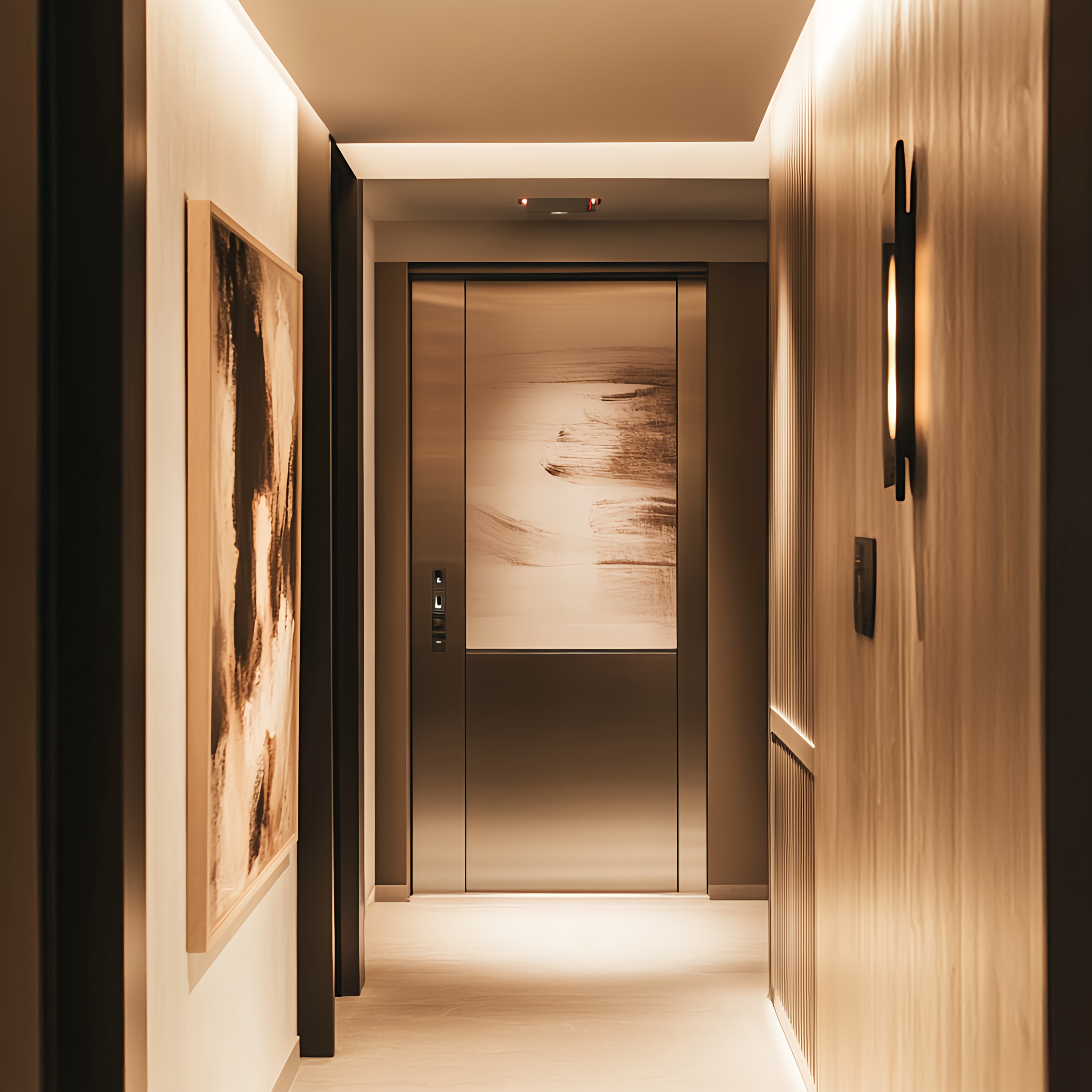
Photo courtesy of Adobe
Installing an elevator pit is imperative to future-proof a home so that if the homeowners want to install a residential elevator in the future, their home was designed and planned that way, saving them thousands of dollars down the road. .
FINANCIAL BENEFITS OF UNIVERSAL DESIGN CONSTRUCTION VS. RENOVATION
Most people think designing with accessibility and inclusion in mind will be much more expensive. Still, once they see the bundle of options that can be built in structurally, before getting into the “fun” selection of finishes and hardware, it’s a fairly marginal percentage of what a universally designed home will cost over a standard home. It’s often less than 5%. And when designers begin the conversation around comfort, long-term care, and the ability to stay in the home for an additional 5-15 years, clients are typically sold. Mauney says, “We don’t see a lot of pushback. The biggest challenge is that many homeowners want these features, but bigger national homebuilders won’t indulge the conversation and won’t incorporate them. We would love to see this mature into the standard because we have seen it change so many lives.”It makes more sense to spend money on the front end to add universal design elements rather than incorporate them into a future renovation. Most importantly, they can increase the home's future resell value while meeting the homeowner's needs. As the Baby Boomer generation ages, multigenerational living becomes more common in the United States, and as the general population becomes more educated about the benefits of universal design, demand for universal design homes will continue to rise. A family seeking universal design would much rather buy a home that already has these elements than have to buy a home, the location they want, and then be forced to spend additional money renovating it.
Designing and building universal design homes isn't appreciably more expensive than new, non-universal design homes. That's because many universal design elements are fairly ubiquitous today, such as doors with levers instead of handles, kitchens with roll-out drawer-style cabinets, and rock-style light switches instead of toggles. Other elements of universal design aren't as common, but make all the difference in creating a home that is able to serve all members of a family without further adaptations. These include:
• Stepless entrances and garages
• Widened doorways
• Curbless showers
• Including an elevator shaft
Backfilling the garage is where the most expense comes in because you must change the topography and bring in field dirt and aggregate. These elements will impact the cost of new construction but adding those features later would result in an enormous added cost. In fact, if you added up the cost of 13 of the most common and essential universal design elements, the difference between including them in the construction vs. adding them later through a renovation is nearly $70,000.21 In addition, there are tradeoffs between material costs and other savings. Wider doors may cost more, but from the builder’s perspective, that wider door requires less framing and wall insulation.
EDUCATING CLIENTS AND COMBATTING PUSHBACK
To help clients understand these design concepts and financial implications, designers can work with them to figure out their needs and long-term goals. This is usually a list of questions that the designer goes through with the client in their first meeting. It’s important to ask clients how they live and what brings them joy. Some clients are new parents in their early 30’s that are thinking about the ability to change throughout different chapters of life, as their children grow and eventually move out of the home. After the pandemic, most people want a dedicated home office whether they are fully remote or in a hybrid work situation. Home offices are here to stay for the foreseeable future, even if it’s a small 6’x8’ pocket office that can be used to get away and take meetings for a couple of hours. There are also a lot of conversations around multigenerational needs occurring — not only dedicating a suite for grandparents, but how families can cook, entertain, have visitors of all ages, and simply just live together in the easiest manner possible.
Universal design touches everybody in some capacity and is a future-thinking mindset that designers must foster. Education and communication through images and details from other homes is the next step. Many homeowners simple aren’t aware that these design tactics are even possible in the home because they’ve never experienced them. Once that’s communicated, there is rarely any pushback on universal design concepts. Mauney says, “Not once have we gone through a brief conversation about universal design and not had a client interested in it. There is always a story that comes out if you dig a little deeper with a client – the inability of someone to stay in their own home or to visit with family members and stay longer at holidays. Most people have had something that has touched them that they are willing to share when they are educated about this concept that makes them pursue universal design.”
DEMAND FOR UNIVERSAL DESIGN IS SKYROCKETING – HERE’S WHY22
SOUTHERN LIVING SHOWCASE HOME, RIVERSTONE ESTATES PITTSBORO, NC
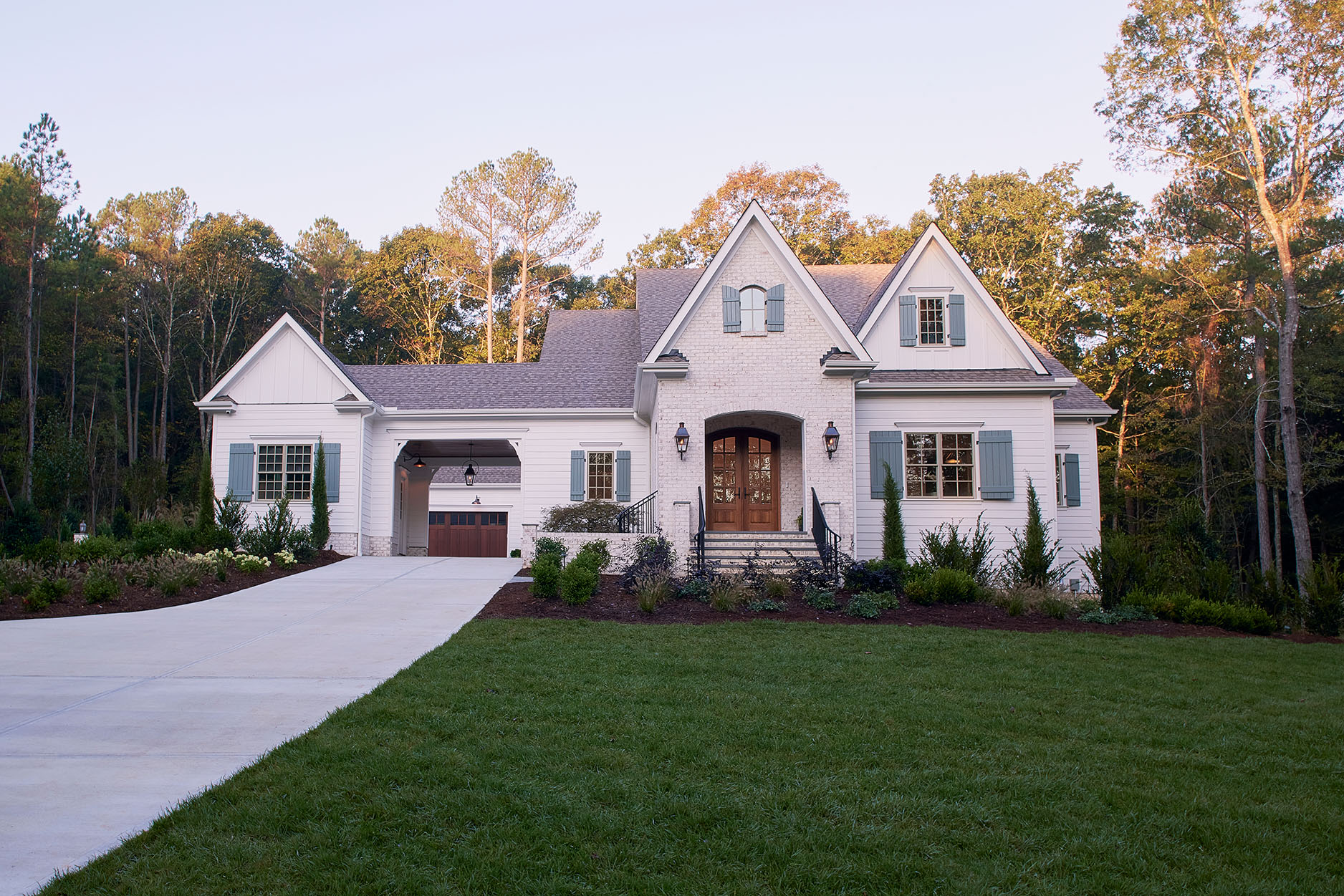
Builder: Paragon Building Group
Architect: LifeStage Home Designs
Landscape Architect: Wildflower Landscape Design and Drafting
Interior Designer: Southern Studio
Photo courtesy of Paragon Building Group.
Josh Mauney can trace his interest in universal design back to his grandfather. Mauney had just started in the building business when his grandfather, who had built every home he had ever lived in, was unable to stay in his home in the last few years of his life. “I made a pact to myself to try and find a better way,” Mauney says.When he stumbled upon the concept of universal design — in short, designing homes that cater to a wide range of ages and abilities —Mauney knew he had found that better way. Now, as president and founder of Raleigh, North Carolina– based custom home builder Paragon Building Group, he builds his homes with 42 different adaptations that help provide what he calls “forever living.”
The universal design specialty has helped Mauney’s business skyrocket in recent years after the COVID-19 pandemic led to a rise in remote work. “It really changed what we saw as a client’s desire to pay attention to some of these things, simply because they were in their home more,” he says. In 2019, Paragon received about 16 leads a year from clients interested in universal design. “We now probably average 15 to 20 a day.”
ACCESSIBLE AND BEAUTIFUL DESIGN
Universal design was prominently on display at Paragon’s 2021 Southern Living Showcase Home in Pittsboro, North Carolina, the first of its kind designed to be fully inclusive and accessible. The adaptations Paragon includes in its projects range from wider doorways and larger turning radiuses around cabinetry to shafts for future elevators and backfilling the garage to create a barrier-free entry to the house. The showcase home offered a chance for Mauney to prove that rather than evoking visions of a wheelchair-accessible bathroom stall, universal design adaptations can be beautiful
Like most of Paragon’s projects, the showcase home is located in a more rural region without access to natural gas. So, the home uses propane to fuel a number of features that make it both luxurious and easier to use for people with a range of abilities. All of Mauney’s homes include propane tankless water heaters, which not only provide energy-efficient, on-demand hot water but also serve an important safety function. Universal design calls for the shower valve to be installed on an exterior wall or just inside the door of the large,
25-square-foot shower stalls. The builder installs a recirculation loop that keeps hot water instantly at the showerhead so the user doesn’t have to enter the shower stall to see if the water is hot. The tankless units are also installed lower on the wall so someone can change the temperature on the thermostat from chair height.Clients who like to cook prefer propane ranges "hands down" Mauney says, and that goes for the outdoors as well, where clients are asking for pizza ovens and 42-inch gas grills. In the kitchen, Paragon’s homes typically include a side- hinged wall oven, which is much safer than lifting a tray over the door.
Propane standby generators are basically standard on homes with price points over $1 million, with sizes ranging from a 22-kW unit to back up most of the home’s systems to a 34-kW size that would provide whole-home protection. “Being able to make sure that that comfort extends through a storm or hurricane, or even just an accident that may take power away for a couple hours, can be a really big deal for somebody who has equipment that they need to breathe or whatever the case may be" Mauney says.
DESIGNING FOR YEAR-ROUND COMFORT
Other features in Paragon’s homes simply make them more enjoyable to live in. Clients typically upgrade to a better insulation and air-sealing package for energy efficiency, while a hybrid heating system that uses a heat pump with propane furnace backup provides warm, comfortable heating, especially for clients moving from parts of the country where gas heating is expected.
The builder typically recommends propane fireplaces inside the home, as well as an outdoor propane fireplace or gas lanterns around the pool. “Outdoor living has always been popular with people who are from this area and probably far more popular for folks who are moving into our market,” Mauney says, “because they’re moving here for good weather.”
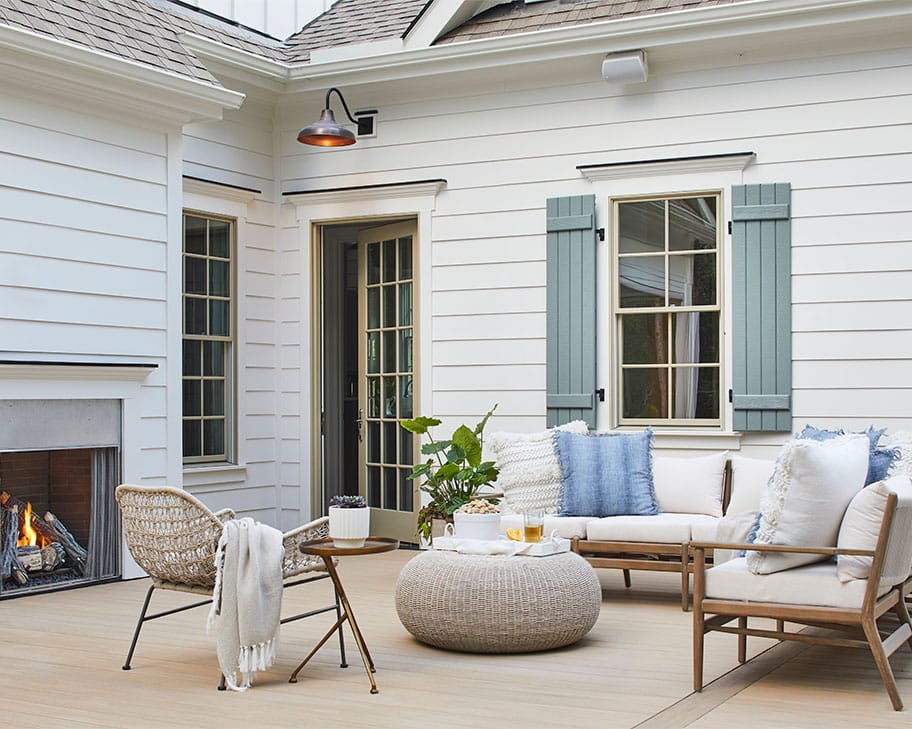
Photo courtesy of Paragon Building Group.
The adaptations Paragon includes in its projects range from wider doorways and larger turning radiuses around cabinetry to shafts for future elevators and backfilling the garage to create a barrier-free entry to the house.
DESIGNING FOR MULTIPLE GENERATIONS
Mauney has been surprised by the diversity of clients who come to Paragon for its universal design specialty — the builder has clients aged 28 to 87. As he toured about 1,800 people through the Southern Living Showcase Home, almost everyone had a story about how accessibility or mobility issues affected a parent, grandparent, or other family member. Even young couples value how the accessibility features help them maneuver after a weekend injury or recovering from a long bike ride.
Universal design is the ultimate form of hospitality, Mauney says, because it makes homes accessible for entertaining any guests or family members. He’s seeing a marked increase in clients seeking homes that can accommodate multiple generations. With the added desire for privacy, that’s led to an increase in demand for larger estate lots. So, Paragon is doing brisk business in
communities such as Riverstone Estates in Pittsboro and Grand Highland Estates in Wake Forest, North Carolina, that offer more space — and utilize propane for gas amenities. “Customers really see universal design as a significant value-add, and
it’s really the whole package,” Mauney says. “The propane is a piece of it, but it’s a big piece of it.”

